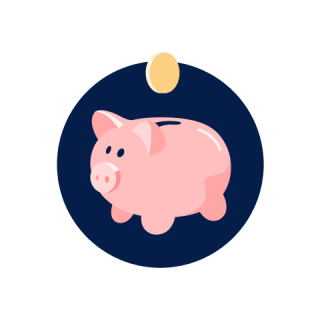Are CDs Worth It?

Many or all of the products featured here are from our partners who compensate us. This influences which products we write about and where and how the product appears on a page. However, this does not influence our evaluations. Our opinions are our own. Here is a list of our partners and here's how we make money.
The investing information provided on this page is for educational purposes only. NerdWallet does not offer advisory or brokerage services, nor does it recommend or advise investors to buy or sell particular stocks, securities or other investments.
Certificates of deposit have some of the highest interest rates among bank accounts, with the best rates reaching 5% and above. Current rates are among the highest they’ve been in a decade. When the Federal Reserve raises its rate, as it has multiple times in 2022 and 2023, banks usually raise their savings and CD yields.
Since CDs have fixed rates, you may wonder when you should open a CD. The answer is that it mostly depends on your short-term savings goals, not the rate environment. Here’s an overview of CDs’ pros, cons and when they can be a good fit for you.
» SEE the best CD rates
Pros to investing in CDs
1. CDs are safe investments. Like other bank accounts, CDs have federal deposit insurance for up to $250,000 (or $500,000 in a joint account for two people). There’s no risk of losing money with a CD, except if you withdraw early.
2. CDs have fixed rates and predictable returns. Once you open a CD, you lock in a rate. This lets you know exactly how much money you’ll earn over your CD term, whether that’s months or years. In contrast, banks and credit unions can change rates on regular savings accounts at will.
3. CDs provide a variety of terms that can offer structure to savings goals.
CD terms typically range from three months to five years, so they can be tools to set aside some of your savings for a set time for future purchases within that time period. In general, the longer the term, the higher the CD rate. (But in 2023, the traditional trend was flipped where one-year CDs had higher rates than five-year CDs.) Remember, too, that the shorter the term, the more frequent your opportunities to redeem or renew a CD.
» LEARN MORE: When and why you should open a CD
⏰ Limited-time offer
at SoFi Bank, N.A., Member FDIC
Don’t miss out on a bigger bonus
Get a NerdWallet-exclusive bonus of up to $400 when you open an account and hit $5,000 in direct deposits within 25 days after your first one. That’s $100 more than SoFi’s normal $300 bonus! Select "Learn More" to get started. Expires 4/22/24. Terms apply.
Cons to investing in CDs
1. You lose access to money in a CD. You can think of CDs as locked storage boxes for some of your money. Once you put an upfront sum into a CD, you can’t add or remove any of it until the day the term ends, which is known as its maturity date. If you break the lock early, the entire balance is withdrawn and there’s a penalty. (For more details, see how CDs work.)
2. CDs have early withdrawal penalties. Breaking into a CD before it matures usually results in a penalty, which can range from several months’ to a year’s worth of interest, or more. In some cases, the penalty might include part of the original amount you put in. (See our article about CD penalties for some examples.)
3. Having a fixed rate can mean missed opportunities.Having a CD can mean hanging onto a high rate even when banks drop rates on savings accounts and new CD offerings, but the flip side is getting stuck with lower CD yields if current CD rates rise. A fixed rate can be a blessing or curse depending on how future rates fluctuate.
» Want more context on rates? See our CD rate forecast

3 situations when CDs work best
CDs have historically offered some of the highest guaranteed returns among bank accounts, but that doesn’t automatically make them the best home for your savings or investments.
“You can go golfing with a baseball bat, but it doesn’t work as well as clubs,” says Derek Brainard, director of financial education at the nonprofit AccessLex Institute. Similarly, “a lot of people think of CDs for investing goals, but they might not be the most appropriate depending on your required rate of return.”
CDs can work well in the following three scenarios:
1. Locking up savings for a near-future purchase
This may include savings for a down payment on a home or car you plan to buy within five years. Other goals might be moving to another city, saving for a child’s education or going on a dream vacation. Whatever the goal, the money won’t be used until you’re ready and can stay safely out of reach in CDs. (If you have savings goals but don’t want to lose access to your money, consider high-yield savings accounts instead.)
» Learn more: Is a high-yield savings account really high-yield?
2. Keeping some savings at a distance
CDs can be a way to stop yourself from spending an earmarked sum, whether that’s money you’ve saved up over time or a windfall such as from an inheritance. In addition, by creating a barrier to those funds with a CD, you have time to determine what to do with the money later, whether that’s investing, saving or spending it. In the meantime, your money can earn more interest than it would in a regular savings account.
3. Ensuring returns without market risk
Investing in CDs without a future purchase in mind might make sense for those who want to avoid risking their money in the stock market.
But remember that CDs are more for short-term safety than for long-term growth. For retirement savings, financial advisors often suggest an asset allocation that involves holding more stocks than bonds or CDs when retirement is decades away, and shifting to more bonds or CDs as retirement nears, to minimize the risk of losing money.
Strategies to combine flexibility and high rates
If you’re worried that the rate you lock in today won’t be as high as tomorrow’s or next year’s rate, here are three ways you could utilize CDs:
1. Use a CD ladder
This investment strategy involves splitting up your intended CD sum and putting equal amounts into multiple CDs of different term lengths at once. Usually, you get terms separated by a time frame that’s easy to remember, such as a year. A standard CD ladder consists of five CDs with terms of one year, two years, three years and so on. (The shortest ladder could be CD terms of three months, six months, nine months and one year.) When each CD ends, you can either reinvest that sum in a new CD for a longer term or withdraw. Learn more about how CD ladders work.
2. Open a no-penalty CD
If you want to test the waters with CDs, a no-penalty CD takes away the worst part of the CD (the early withdrawal penalty) and lets you earn interest at a fixed rate. You still can’t access money regularly as you would with a regular savings account, but you can withdraw nearly at any time after the first few days. That can mean switching to a CD with a higher rate if one becomes available. No-penalty CD terms tend to be close to one year, and rates aren’t as high as the best CD rates, but rates are comparable to high-yield savings accounts. Check out the best no-penalty CD rates.
3. Try a bump-up CD
Bump-up CDs let you request a rate increase during a CD’s term, as long as the bank raises the rate on newly issued bump-up CDs. This perk comes in handy during a rising-rate environment, but even if rates fall, you can still earn a decent rate. Learn more about bump-up CDs.
No-penalty and bump-up CDs can be hard to find compared to regular CDs, but they can be worthwhile to consider if their rates are competitive.
On a similar note...





